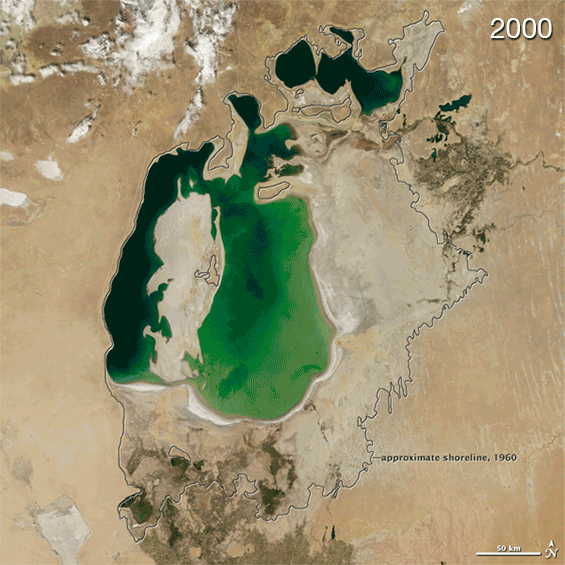
New photos from NASA show that a lake in Siberia has almost disappeared since 2000, thanks to a Soviet water diversion program from the 1960s.
The Aral Sea, in Uzbekistan, was once the fourth largest lake in the world. Now it’s now a fraction of the size it was in 1960, according to the photographs. Even since 2000, the lake has shrunk dramatically, and seems poised to disappear altogether.
The lake was fed by the Syr Darya and Amu Darya rivers before the Soviet Union diverted them in the 1960s in order to irrigate the arid deserts in Kazhakstan, Turkmenistan, and Uzbekistan. Since then, the lake has almost completely dried up, which spells disaster for communities that depend on it, and the water has become too salty and polluted to support native fish populations.
Check out the dramatic change between the Aral Sea in 2000 and the Aral Sea today.
More Must-Reads from TIME
- Cybersecurity Experts Are Sounding the Alarm on DOGE
- Meet the 2025 Women of the Year
- The Harsh Truth About Disability Inclusion
- Why Do More Young Adults Have Cancer?
- Colman Domingo Leads With Radical Love
- How to Get Better at Doing Things Alone
- Michelle Zauner Stares Down the Darkness
Write to Charlotte Alter at charlotte.alter@time.com